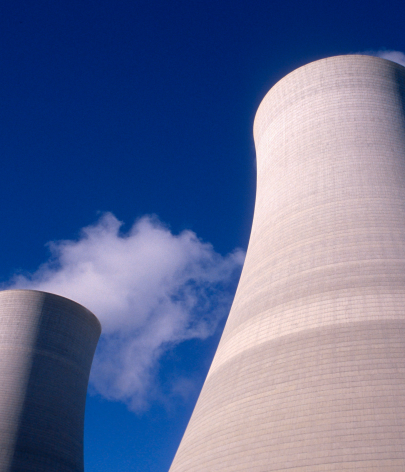Highlights
10
All top 10 2021 emitters were coal and lignite plants
17%
Coal power emissions up 17% compared to 2020
53%
Germany and Poland account for more than half of all EU power sector emissions
About
Ember analysis of EU-ETS data finds that the top 10 emitters in the EU-ETS were coal or lignite power plants in Germany and Poland.
On Friday 1st April, the European Commission released emissions data for 2021. This data is reported as part of the EU’s Emissions Trading System (EU-ETS) which is a cap and trade carbon market covering EU countries, Switzerland, Norway, Iceland and Liechtenstein. The EU-ETS sets a market price for carbon across Europe and covers aviation, electricity and heat generation, and energy-intensive industries such as steel, cement and oil refineries.
Executive summary
Coal power still dominates EU-ETS emissions
Emissions from the EU power sector rise as the post-Covid economic recovery and gas price crisis push up coal power plants emissions.
Harriet Fox Energy & Climate Data Analyst, Ember
Clean power by 2035 is a climate imperative for the EU. That means any growth in coal generation must be temporary. Cutting off Russian gas in the next few years and a Paris-compliant coal phase-out aren’t mutually exclusive. Now is the moment for a massive effort on renewables to create a cleaner, cheaper and more reliable energy mix as quickly as possible.
2021 EU-ETS emissions
EU emissions increase with post-Covid recovery
In this chapter:
For these top three utilities, coal was responsible for 92% of their total EU power sector emissions. PGE and EPH both reported an increase in coal emissions since pre-pandemic 2019 of 17% and 8% respectively, whilst RWE coal emissions fell 9% since 2019. Previous analysis from Ember found that none of these utilities currently have a plan to phase out coal before 2038.
ENGIE, EDF and Eni are the power sector utilities with the highest gas emissions in the EU-ETS, accounting for 20% of total gas power emissions. It’s long been clear that reliance on imported fossil gas exposes countries to volatile pricing and geopolitical pressures, but the war in Ukraine and surging gas prices have shattered the assumption that fossil gas can act as a ‘transition’ fuel. Utilities most reliant on gas will have to start to look at other options, starting with a significant increase in ambition on wind and solar.
Conclusion
The EU needs to cut off Russian fossil fuels, not climate targets
Following the invasion of Ukraine, Europe is faced with the urgent task of cutting off reliance on Russian coal, oil and gas. Meanwhile, the third IPCC report released this week highlighted the pressing need for the world to end all fossil fuels to keep global heating to 1.5C. As governments consider extending coal use to end Russian gas imports, this report underlines that they can’t lose sight of the disastrous climate impact that comes with burning more coal. A recent report by Ember, E3G, RAP and Bellona showed that the EU can end imports of all Russian fossil gas by 2025 with clean energy replacing 66% of Russian gas imports, and without extending coal power generation.
The rise in the EU-ETS price has provided a nudge away from the most polluting fuels, but carbon pricing alone won’t be able to shift the electricity sector fast enough. The EU and European countries need to make or firm up commitments to 100% zero-carbon power by 2035, signalling that the end of coal and gas generation is in sight, and urgently address regulatory and market barriers that are holding back clean energy deployment at the speed and scale needed.
See more: View the daily EU-ETS and UK-ETS carbon prices.
Dig into the data
Country-level top 10 emitters
Supporting Material
Downloads
Methodology
Missing installations
Some installations have not reported emissions yet. These installations accounted for roughly 8% of emissions in 2020. For these installations, emissions for 2021 were estimated provided their account status was ‘open’, they were not excluded from the ETS and they reported in 2020. To calculate their estimated emissions, a percentage change from 2020 was applied. This was taken from the sector the installation belongs to, or according to the installation’s power plant fuel type where possible.
From 2021 onwards, the UK no longer reports emissions as part of the EU-ETS. Year-on-year comparisons have been adjusted to take this into account, however, previous Ember analysis of the EU-ETS is based on EU-27 + UK data and may therefore appear different to the results presented here.
Power Sector Definition
The EUETS power sector records include combined heat and power plants along with power only.
In this analysis, power sector is taken to include combined heat and power installations alongside power only installations.
Biomass and some waste generation is not included. If biomass emissions were counted in the EU-ETS, the UK’s Drax Power Station, with emissions of 13.9 million tonnes of CO2e in 2021, would be Europe’s 7th largest emitter.
Fuel Categories
Mappings for installation fuel types have been taken from previous Ember analysis and the ETC/CME Dataset 1/2021
Peat, non municipal waste, oil and blast furnace gases were all mapped to other unless clearly stated separately. In addition the primary fuel for many very small installations could not be researched. These are also mapped to other, but are most likely small oil and gas plants, or oil and gas cofired in biomass plants.





